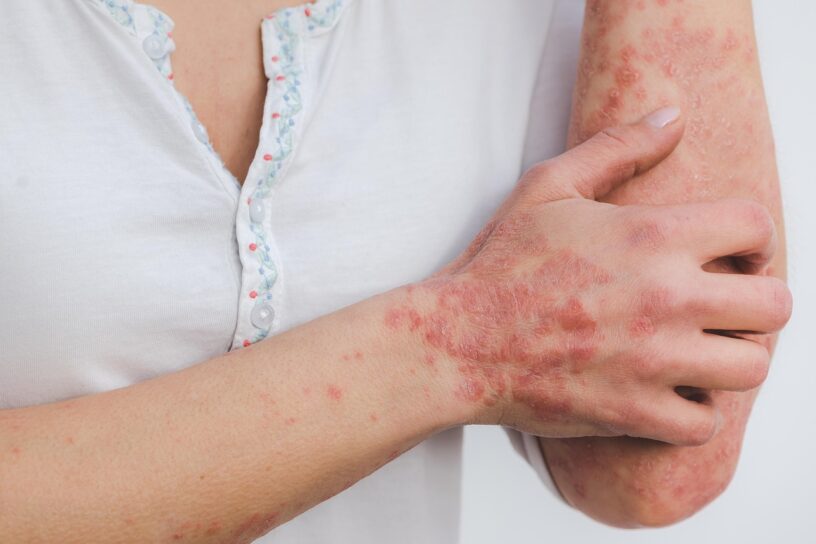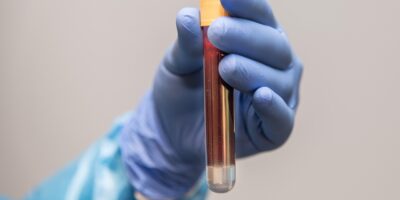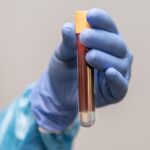Psoriasis is an autoimmune skin condition known worldwide, where your cells multiply very fast. It can lead to redness, inflammation, discomfort, and even mental health struggles.
Imagine that your skin is a construction site with many workers. Skin in normal conditions will have workers who clock out at 5, which makes sure that they have a good night of sleep to build each layer cautiously. However, with psoriasis, those same workers are working overtime, as if they have a very strict deadline. As a result, this forms scaly, thick patches on the skin.
Unfortunately, after years of research, no one has found a cure. Researchers have found ways to calm the inflammation (giving the workers a break), but a treatment really can not cure a disease.
A Different Cause Behind Psoriasis
Researchers in recent studies started to wonder if psoriasis might be driven by looking at nuclear transport in skin cells. The results come from researchers from Nanjing University and the Department of Dermatology of the First Affiliated Hospital of Nanjing Medical University.
Their work was published in International Immunopharmacology on December 25th, 2024, in an article titled “Inhibition of KPNA2 by ivermectin reduces E2F1 nuclear translocation to attenuate keratinocyte proliferation and ameliorate psoriasis-like lesions”.
KPNA2 and Ivermectin
The nucleus is the control system of the cell, which has the power to manage cell growth. Considering the nucleus is such an important part of the cell, only some specific molecules can enter. Karyopherin subunit alpha 2 (KPNA2) is one of those transport proteins that help molecules enter the nucleus. KPNA2 can form a complex with Importin β, which guides molecules that have Nuclear Localization Signals (NLS) through the nucleus. The disruption of this process has been linked to many diseases (like cancer), due to the upregulation of KPNA2. This affects proteins like STAT3, which is closely tied to the development of psoriasis. Considering this aspect, the researchers started to wonder if there could be a correlation between how KPNA2 helps STAT3 enter the nucleus and activate the inflammatory pathways.
Interestingly, researchers found that ivermectin, an antiparasitic drug, can also affect this process. In this research, ivermectin was used as a “temporary lock” on KPNA2 to prevent it from taking NLS and stopping nuclear transport.
Patients and Animal Models
The researchers began by analyzing gene expression datasets from the Gene Expression Omnibus to compare healthy and psoriatic skin. The skin samples needed were collected from five psoriasis patients and five healthy volunteers, which were examined through immunohistochemistry, with the purpose of finding KPNA2 presence and location in the samples.
Also, the researchers utilized seven-week-old female imiquimod-induced psoriatic mouse models, some who which received ivermectin injections for six days. The changes were then scored using the Psoriasis Area and Severity Index to understand the severity of inflammation.
The researchers additionally performed experiments in human skin cells called HaCaT keratinocytes. The epidermal growth factor (EGF) was used to trigger overgrowth, and then ivermectin or KPNA2-targeted siRNA was added to see if blocking KPNA2 could actually reduce proliferation, nuclear transport, and the inflammation signaling pathways.
Effect of KPNA2 on Psoriatic Skin
Notable trends were confirmed from the analysis. KPNA2 was significantly overexpressed in psoriasis patients and mice, compared to healthy skin. This was identified from the fact that there was a strong KPNA2 staining in the basal layer (where cells are generated) of the psoriatic skin, which was then seen to have a decrease in gene expression after successful treatments.
The psoriatic mice that were treated with ivermectin showed a fast improvement since when analyzed through various histological analysis, their redness, scaling, and lesion thickness lowered. Inside the cell, ivermectin treatments were able to reverse many of the inflammatory changes on the skin, which were triggered by psoriasis. It was confirmed that ivermectin was able to suppress phosphorylated STAT3, a key molecular switch that drives inflammation and cell growth.
In human skin cells, the researchers observed that when cells were stimulated with EGF, there was a slowed cell cycle, which would suggest that KPNA2 directly regulates how the growth signals reach the nucleus.

Figure 1. The lock and key mechanism. The figure was extracted from the study (originally Figure 8). The figure shows a visual summary of the mechanism in how ivermectin can stop the chain reaction inside the cells, which inhibits KPNA2. Ivermectin blocks E2F1 from entering the nucleus, which restores normal cell behavior (Ma et al., 2024, p. 13).
At the molecular level, ivermectin was able to block KPNA2’s ability to take proteins into the nucleus. This prevented the skin cells from dividing uncontrollably, which is very similar to how workers can clock out. All of these results help explain how ivermectin is very powerful since it can alleviate psoriatic skin lesions and how KPNA2 is a promising therapeutic target.
The Next Steps
Overall, this study reconstructs how researchers look at psoriasis. Now, from the inner workings of the cell, rather than the immune system. The fact that KPNA2 has a link in affecting inflammation and cell overgrowth, new doors have been opened.
Also, this study touches upon drug repurposing, since ivermectin, an antiparasitic drug, was able to target KPNA2 from a new therapeutic angle. As a result, this has opened an entirely new world of possibilities for finding a lasting psoriasis relief.
Still, many more clinical studies are needed to understand how controlling nuclear transport can help calm immune activity. However, this study did in fact serve as a proof of concept in psoriasis treatments.
Ma, B., Gu, C., Lu, R., Lian, P., Wang, W., Huang, Z., Su, Z., & Wang, H. (2024). Inhibition of KPNA2 by ivermectin reduces E2F1 nuclear translocation to attenuate keratinocyte proliferation and ameliorate psoriasis-like lesions. International Immunopharmacology, 143, 113360. https://doi.org/10.1016/j.intimp.2024.113360
Source image: https://pixabay.com/photos/psoriasis-skin-disease-inflammation-5996424/








